Sculpture Year
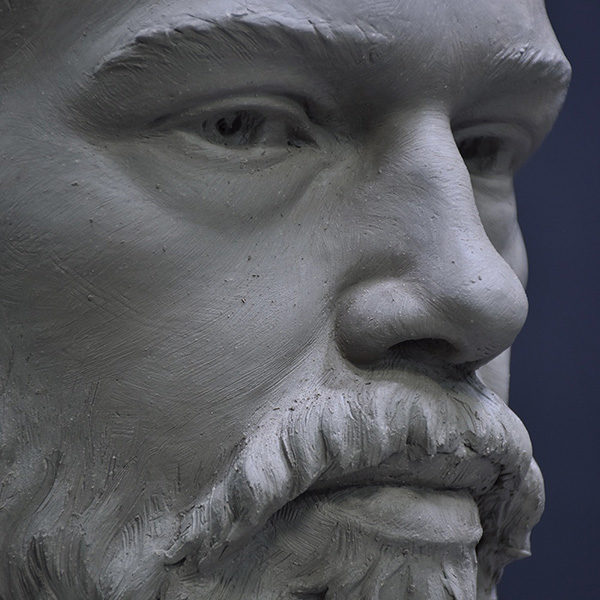
Students may apply directly to the Sculpture Year, a full time intensive sculpture curriculum designed to introduce artists through a traditional skill-based approach to a wide range of figurative sculpture practices that will prepare them for advanced work as a professional figurative sculptor. Artists will begin with a series of 1:1 scale portrait studies, learning how to measure from a model, develop a strong sense of conceptual structure and train to achieve likeness through accuracy of form and proportion of volumes. After portraiture, students focus on figure sculpture, learning how to adjust their scale from the live model and further develop their sense of balance, gesture, rhythm and anatomy. Artists will have an opportunity to learn how to mold and cast their work from the first half of the year with a weeklong mold making workshop. In the first half of the year, afternoons are devoted to anatomical study in which the students develop a complete écorché in oil clay, starting with the bones of the skeleton and adding the muscles on one at a time. Discussion of materials, composition and structural three-dimensional form are emphasized throughout the courses.
In the second half of the year, artists begin to sculpt parts of the figure at life-size scale by modeling a life-size torso in gesture. Afternoons are spent studying relief sculpture by creating their own relief compositions with drapery, figures and other subjects. Special projects in lifecasting, patination and tool-making are also offered throughout the year. Finally, artists resolve their first year in sculpture with a project proposal of their own design, creating their own composition utilizing the skills learned to construct a narrative figure composition or a self portrait, advancing their methods developed over the course of the year.
After completing the sculpture year, students will emerge with the confidence and skillset to create in clay strong figurative sculptures with a deep understanding of three-dimensional structural relationships. Through the study of the live model and a multitude of other resources and practices, artists will be able to sculpt across a variety of projects and develop a concept of form and structure that does not rely on contour copying. Instead they can construct, model and finish sculptures according to the ideals of form, anatomy and design that they propose.
Students may apply to enter a second or advanced year in Sculpture where they will continue work on a life-size figure sculpture and further development of advanced three-dimensional study.
Students may also opt to enter the drawing or painting program and apply to the Painting or Drawing Years.

Portrait Sculpture
Beginning with a series of week-long poses, students will construct the portrait in clay at a 1:1 scale. Artists will learn how to utilize measuring tools, build their own armatures and develop a foundation of the important skills and practices that will prepare them for future endeavors as representational sculptors. Students will learn how to achieve convincing and lifelike portraits through the understanding of structure, volume, proportion, and three-dimensional form. As the poses advance in length and complexity, projects include a deeper discussion of gesture, narrative and final form modeling. Artists will have the opportunity to mold and cast their work from their portrait series within the moldmaking portion of instruction that follows the course.
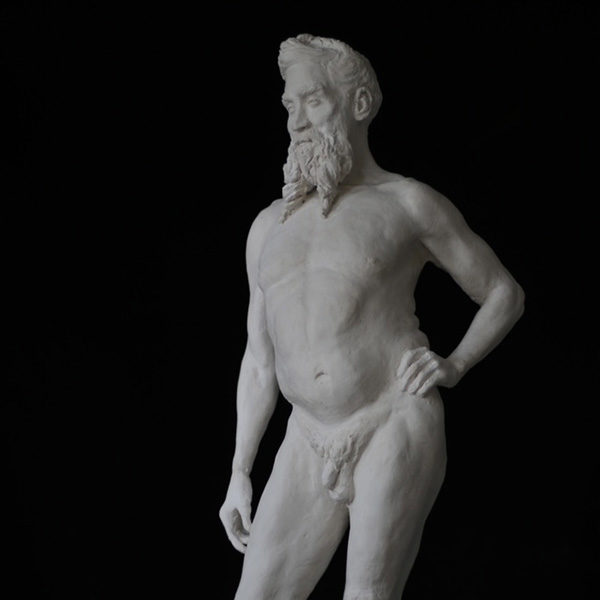
Figure Sculpture
During the course of 8 weeks, students will study the figure through a series of several short poses and then advance towards a longer final figure sculpture in clay. In the first poses, artists will learn how to accurately adjust scale from the live model, construct and use a figure armatures, and develop their three-dimensional understanding of figure structure and proportion. For the final pose, discussion of the large structural masses of the body and how they move together will be emphasized- sculpting a “kinetic gesture”- a pose the model can move through, but not hold. This will force an understanding of the structural relationships in a three dimensional way. The students will not be able to rely on the 2-dimensional shape-finding or contour methods taught in drawing and so will learn how to construct form in 3-dimensions using the model to inform their conceptualization of the gesture.
Through the study of several figures across varying poses, artists will develop the ability to process form information in a 3-dimensional way. The information that leads up to a long pose will allow the students to take their sculptures to final completion. Students will develop a deeper understanding of what structural anatomy looks like in three dimensions and learn finishing techniques for clay, while refining the concepts learned in the previous weeks.
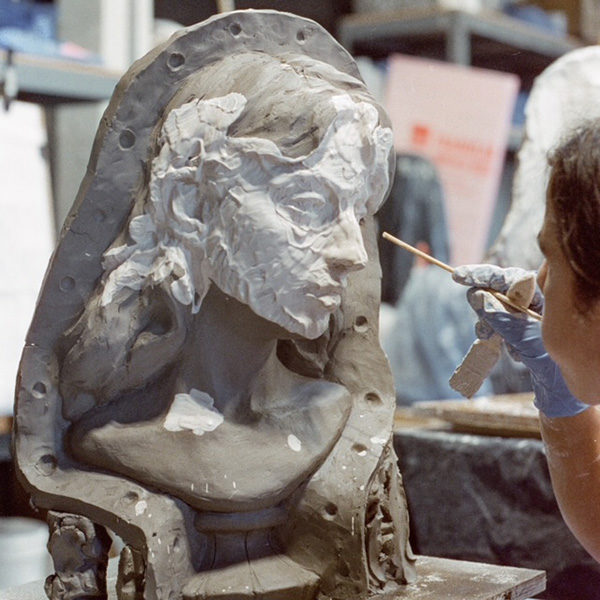
Moldmaking
Artists will learn how to practice traditional mold-making techniques to transform their work from clay into finished plaster sculptures. Hands-on instruction will include how to construct a waste mold, cast and chisel out their sculptures. Further finishing techniques will be introduced as well as alternative mold making methods, such as silicone and slip casting. Base design, patination and installation of sculpture will also be discussed.

Écorché
Students will learn anatomy of the figure through the process of building up and sculpting an écorché in oil clay over the course of the fall term. Lectures and drawn diagrams will accompany lessons on skeletal structure, muscle attachments, classical proportions of the body and concepts of potential movement. By the end of the class, students will have a strong concept of the human body and an understanding of how its forms are structured and manipulated in gesture. Keeping a sketchbook for notes and drawings is encouraged in addition to sculpting the anatomical form in clay.
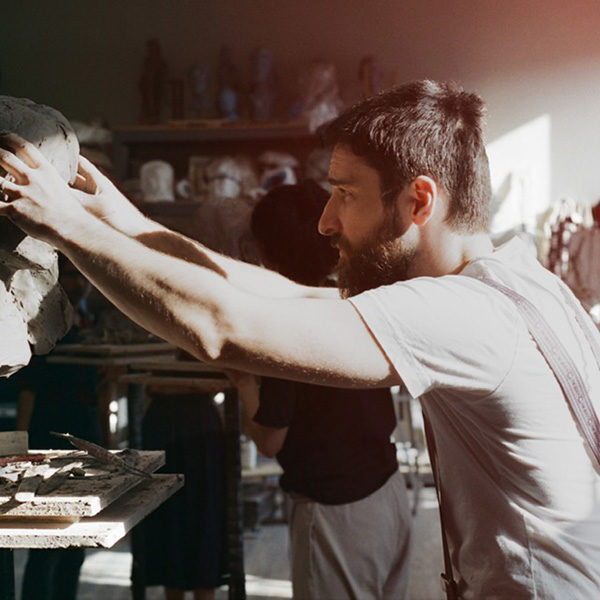
Life-size Torso
Studying the body at life-size scale, students will construct a life-size torso that allows them to dive deeper into their understanding of figure anatomy and gesture. At a larger scale, artists can advance their sense of form development and resolution of volume relationships, moving from dominant masses to more refined subforms. Students will learn how to manage large volumes of clay over a longer pose and how to successfully communicate the figure’s gesture within an internal, cropped composition. Surface treatment, form sense and logical structure will be emphasized.
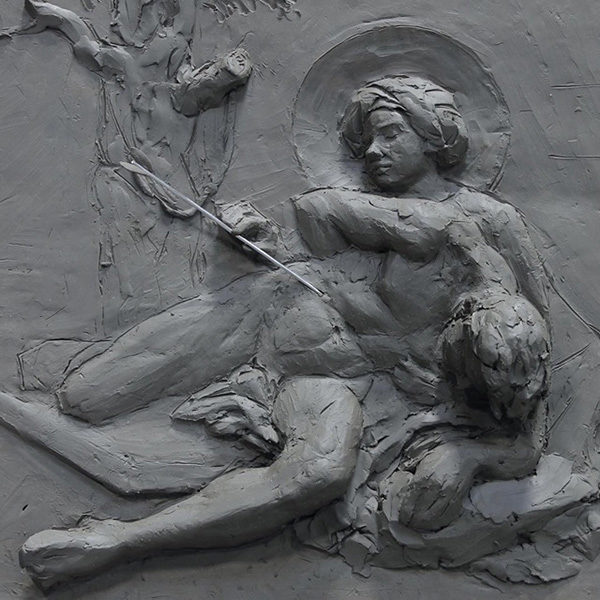
Relief Sculpture
Students will learn how to create a composition in relief using a still-life set up or classical imagery that includes drapery, figures, casts and/or other subjects to communicate perspective and form modeling in a compressed way. Students will rely heavily on their drawing training to formulate composition and design choices, as well as their three-dimensional understanding to learn how to push volumes back in space effectively. Discussion of historical reliefs and other relief applications will take place.
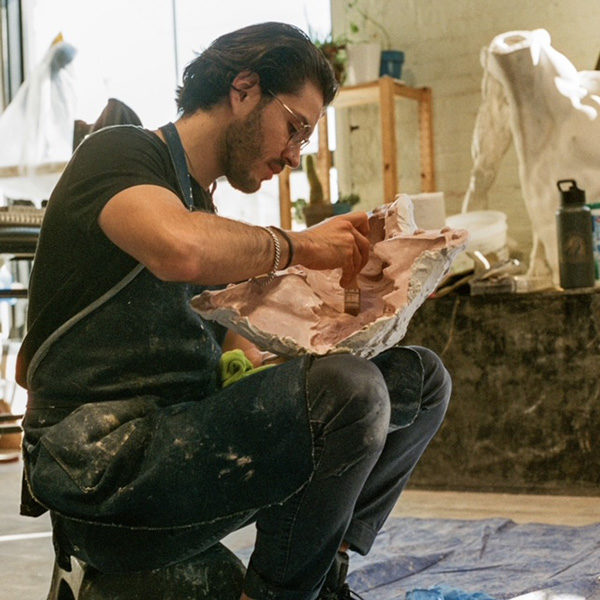
Lifecasting
Students will be introduced to the basics of life casting for the purpose of studying the large volumes and subforms of the figure and assembling a variety of anatomical resources from the live model. Use of alginate and plaster bandage will be taught. Artists are encouraged to create their own projects and learn how this skillset can be utilized to further their figurative sculpture understanding.
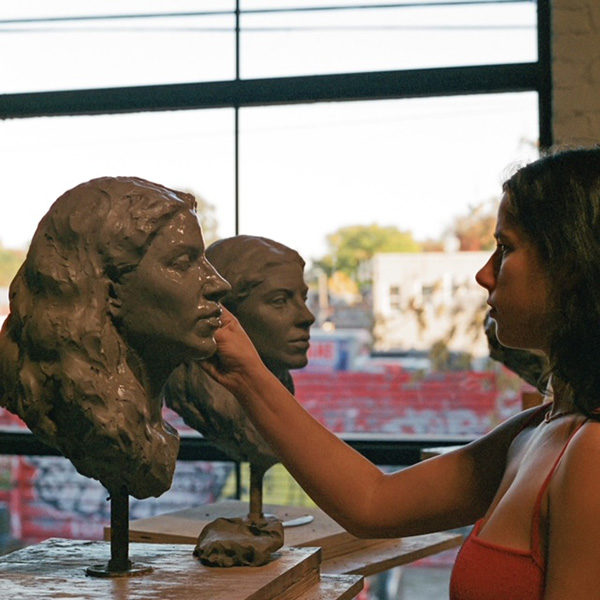
Narrative Sculpture by Design
As their final piece, artists will conceive and design their own finished composition for a figurative sculpture in clay utilizing the skills and techniques developed over the course of the year. Students will follow a classical approach to project development, providing sketches and three dimensional maquettes and research to explore their composition fully before committing to their final sculptures. The sculpture may be figurative or portrait based, including multi-figured compositions or narrative self-portrait utilizing lifecasts, measurements and other resources. Students may work together with the model to design their composition and gesture and will work closely with the instructor to improve their sense of structure, balance and composition. Students should by the end of their sculpture year have developed a complete and careful method for conceiving, planning and executing a successful and engaging figurative sculpture that contains a deep understanding of volume, structure, gesture and compositional design.
Fall Semester: September through January
Spring Semester: February through May
Morning Class Hours: 8:30 to 12:30pm
Afternoon Class Hours: 1– 5pm
Mid-year Individual Critiques – January
End-of-Year Individual Critiques – May
Sculpture Year Nine-Month Study Schedule

